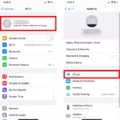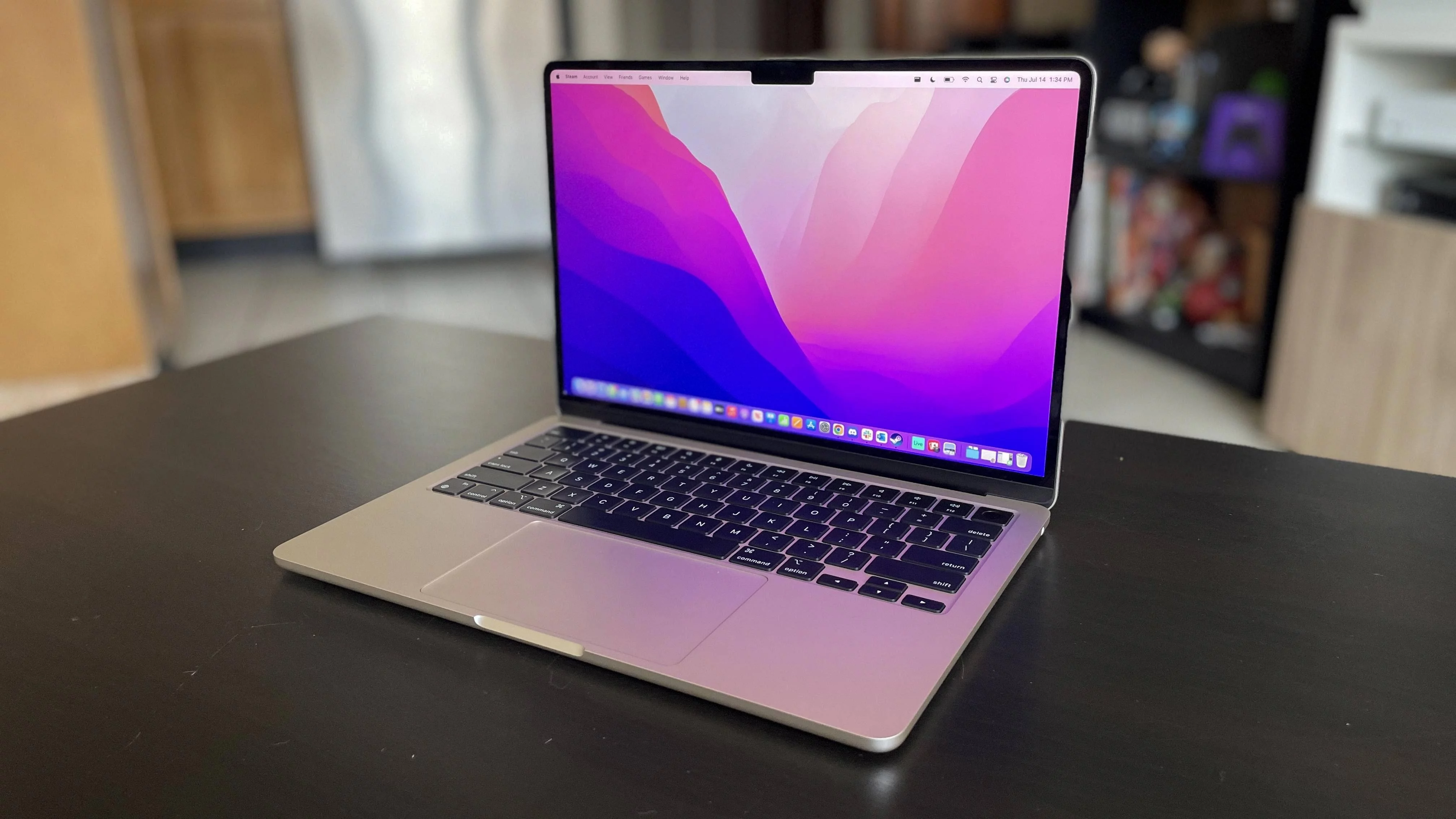The Magic Mouse is a popular accessory for Mac users, providing a sleek and seamless way to navigate your computer. However, like any technology, it can sometimes encounter issues that can be frustrating to deal with. One common problem that users may experience is lagging or jumping cursor movements. In this article, we will explore some possible causes and solutions for this issue.
Firstly, it’s important to check the overall performance of your Mac. If your CPU or RAM is under stress or if you have multiple resource-intensive apps running in the background, it can affect the responsiveness of your mouse cursor. To address this, try closing any unnecessary apps that may be consuming a high amount of resources. This can help alleviate the strain on your system and improve the performance of your Magic Mouse.
If closing apps doesn’t resolve the issue, you may need to reset your Mac’s hardware settings. This can be done by holding down the Options-Command-P-R keys during bootup. Allow the system to reset a couple of times with these keys held before releasing them and allowing the system to boot normally. This approach can help clear any underlying issues that may be causing the lagging or jumping cursor.
Another potential solution is to adjust the cursor tracking settings on your Mac. To do this, go to “Apple” in the top-left corner of your screen, then select “System Preferences,” followed by “Mouse” in the Hardware section. In the Mouse dialog, you’ll find a “Tracking” slider that allows you to change how the cursor moves across the screen. Adjusting this setting may help improve the responsiveness of your Magic Mouse.
If you’re using a wireless Magic Mouse, it’s worth checking the batteries. Low battery power can lead to lagging cursor movements. Replace the batteries with new ones to ensure optimal performance.
In some cases, the issue may be due to dirt or debris interfering with the infrared sensor under your Magic Mouse. Cleaning the mouse can help resolve this issue. Start by turning off your mouse and disconnecting it from your Mac. Use a soft, lint-free cloth to gently wipe the surface of the mouse, paying special attention to the area around the infrared sensor. If necessary, you can also use a can of compressed air to remove any dirt or debris that may be stuck in the sensor or the scroll wheel.
If the issue persists and you suspect that there may be dirt inside the scroll wheel, you may need to open the mouse using a screwdriver. Be careful not to damage any internal components while doing this. Once the mouse is open, use the canned air to clean out any dirt or debris that may be affecting the scroll wheel’s functionality.
If you’re experiencing lagging or jumping cursor movements with your Magic Mouse, there are several steps you can take to address the issue. Start by checking your Mac’s overall performance and closing any unnecessary apps. Resetting your hardware settings and adjusting the cursor tracking can also help improve responsiveness. Additionally, ensure that your wireless Magic Mouse has fresh batteries and clean the mouse to remove any dirt or debris. By following these steps, you can hopefully resolve the issue and enjoy smooth and precise cursor movements once again.

Why is Your Apple Mouse So Laggy?
The Apple mouse can become laggy due to various reasons. One of the common causes is high CPU or RAM usage on your Mac. When the CPU or RAM is stressed, it can lead to a lack of resources for the mouse to function smoothly. As a result, you may experience lags and stutters in the mouse cursor movement.
Another potential cause of mouse lag is the presence of apps running in the background that consume a significant amount of system resources. These apps can hog the CPU and RAM, leaving fewer resources available for the mouse to operate efficiently. Closing unnecessary apps running in the background can help alleviate this issue.
Additionally, outdated or incompatible mouse drivers can also be a contributing factor to mouse lag. Make sure that you have the latest mouse drivers installed on your Mac to ensure optimal performance.
If you are using a wireless Apple mouse, the lag may be caused by a weak or unstable Bluetooth connection between the mouse and your Mac. Try moving closer to your Mac or removing any potential sources of interference, such as other electronic devices, to improve the Bluetooth connection.
In some cases, a dirty or faulty mouse surface can also cause the cursor to lag or jump around. Ensure that the mouse surface is clean and free from any debris that may interfere with the mouse’s tracking.
How Do You Fix a Laggy Magic Mouse?
To troubleshoot and fix a laggy Magic Mouse, you can try the following steps:
1. Check the battery level: Ensure that the Magic Mouse has sufficient battery power. If the battery is low, replace it with a fresh one or charge it using a Lightning cable.
2. Clean the mouse surface: Use a microfiber cloth or a soft, lint-free cloth to clean the surface of the mouse. Dust, debris, and fingerprints can affect the mouse’s performance.
3. Restart your Mac: Sometimes, a simple restart can resolve minor software glitches. Click on the Apple menu, select “Restart,” and allow your Mac to reboot.
4. Reset the Bluetooth connection: Open the System Preferences on your Mac, go to the Bluetooth settings, and remove the Magic Mouse from the list of paired devices. Restart your Mac and then pair the mouse again.
5. Update macOS and mouse firmware: Keeping your Mac’s operating system and the Magic Mouse firmware up to date can fix compatibility issues. Go to the Apple menu, select “System Preferences,” and click on “Software Update” to check for any available updates.
6. Disable Wi-Fi and other wireless devices: Interference from nearby wireless devices or a crowded Wi-Fi network can cause lag. Temporarily turn off or move away from other wireless devices, including routers, smartphones, or Bluetooth speakers.
7. Adjust tracking speed: Open the System Preferences, click on “Mouse,” and adjust the tracking speed slider to a comfortable level. Experiment with different settings to find the one that works best for you.
8. Reset the SMC and NVRAM: Resetting the System Management Controller (SMC) and Non-Volatile Random-Access Memory (NVRAM) can help resolve hardware-related issues. Follow Apple’s official documentation or consult the Apple Support website for detailed instructions on how to reset these.
9. Test on a different surface or mousepad: The Magic Mouse’s performance can be affected by the surface it is used on. Try using it on a different mousepad or a smooth, non-reflective surface to see if it improves the responsiveness.
10. Contact Apple Support: If none of the above steps resolve the laggy mouse issue, it is recommended to contact Apple Support or visit an Apple Store for further assistance. They can provide more advanced troubleshooting steps or suggest potential hardware replacements if required.
Remember, these steps are general troubleshooting measures and may not fix all laggy Magic Mouse issues. If the problem persists, seeking professional support is advisable.
How Do You Fix a Jumpy Mouse On a Mac?
To fix a jumpy mouse on a Mac, you can adjust the tracking settings in the Mouse preferences. Here are the step-by-step instructions:
1. Click on the Apple menu in the top-left corner of the screen.
2. From the drop-down menu, select “System Preferences.”
3. In the System Preferences window, locate and click on the “Mouse” icon in the Hardware section.
4. This will open the Mouse dialog, where you can customize various mouse settings.
5. Look for the “Tracking” slider within the Mouse dialog.
6. Click and hold the left mouse button on the Tracking slider.
7. While holding the mouse button, drag the slider to the right or left to adjust the tracking speed.
– Moving the slider to the right increases the tracking speed, making the cursor move faster across the screen.
– Moving the slider to the left decreases the tracking speed, making the cursor move slower across the screen.
8. Release the mouse button once you have found a comfortable tracking speed.
9. Check if the mouse movement has improved. If not, you can repeat the steps and try adjusting the tracking speed again.
By customizing the tracking speed, you can find the optimal setting that reduces mouse jumpiness and provides a smoother cursor movement on your Mac.
Why is Your Mouse Not Moving Smoothly?
There could be several reasons why your mouse is not moving smoothly. Here are some possible causes and solutions:
1. Wireless mouse: If you are using a wireless mouse, the first thing to check is the batteries. Replace them with new ones to ensure a strong and consistent power supply.
2. Dirt and debris: Over time, dirt and debris can accumulate on the bottom of your mouse, obstructing the infrared sensor that tracks its movement. Clean your mouse by following these steps:
– Turn off your computer and unplug the mouse.
– Flip the mouse upside down and locate the sensor, usually a small red light or a shiny surface.
– Use a soft cloth or cotton swab to gently wipe the sensor and the surrounding area to remove any dirt or debris.
– If the issue persists, you may need to open the mouse using a screwdriver and use canned air to clean out any dirt that may be trapped inside.
3. Mouse surface: The surface on which you use your mouse can also affect its smooth movement. Ensure that you are using a mouse pad or a smooth, non-reflective surface for optimal tracking.
4. Driver issues: Outdated or incompatible mouse drivers can cause performance issues. Make sure your mouse drivers are up to date by visiting the manufacturer’s website and downloading the latest driver software.
5. Interference: If you are using a wireless mouse, other wireless devices or nearby sources of electromagnetic interference can disrupt its signal, leading to jerky or erratic movement. Try moving your mouse closer to the receiver or away from potential sources of interference, such as cordless phones or wireless routers.
6. Hardware problems: In some cases, the issue may be hardware-related. If none of the above solutions work, consider trying your mouse on a different computer to see if the problem persists. If it does, you may need to replace the mouse.
Remember to troubleshoot each possible cause one at a time to pinpoint the exact issue and find the most suitable solution.
Conclusion
If you are experiencing lagging or jumping of your Magic Mouse cursor on your Mac, there are several steps you can take to address the issue.
First, check the overall performance of your Mac by closing any unnecessary apps running in the background. High CPU or RAM usage can cause lags and stutters, which can affect the mouse cursor movement.
You can also try resetting the system by holding down the Options-Command-P-R keys at bootup. Letting the system reset a couple of times before releasing the keys can help resolve any lingering issues.
Additionally, adjusting the tracking speed of the mouse cursor through the Mouse settings in System Preferences can help improve its movement across the screen. Experiment with different settings to find the right balance for your needs.
If you are using a wireless Magic Mouse, it is important to ensure that the batteries are not running low. Replace them with new ones if necessary.
Lastly, dirt or debris on the mouse’s infrared sensor or inside the scroll wheel can cause erratic cursor behavior. Clean the mouse by gently wiping the sensor and using canned air to remove any dirt from the scroll wheel. If needed, you may need to open the mouse with a screwdriver for a more thorough cleaning.
By following these steps, you should be able to address the issue of Magic Mouse lagging and enjoy smooth and reliable cursor movement on your Mac.








